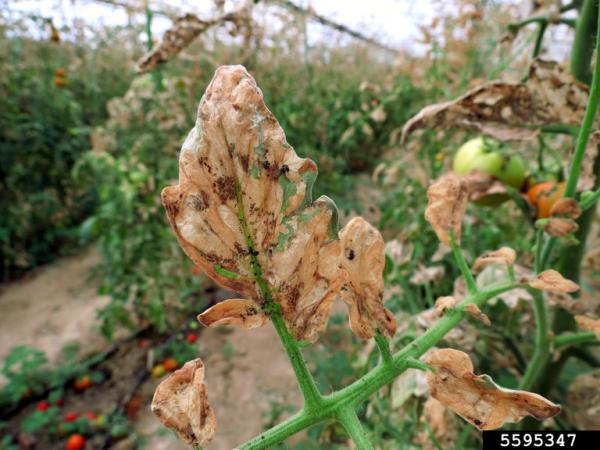Tuta absoluta (Meyrick) (CABI)
Tomato leaf miner, South American tomato leaf miner, South American tomato pinworm
Formerly known as Phthorimaea absoluta (Meyrick 1917)
Originally thought to be native to Central America, but now believed to have originated in Peru (Biondi et al. 2018)
Not yet present in the United States
May be transported through the fruit trade (Biondi et al. 2018)
Pest of tomatoes that can cause yield losses of up to 100% (Biondi et al. 2018)

Tomato Leafminer in greenhouse
Photo by Metin Gulesci; Leaf Tobacco
Find more images
Spotlights
Distribution / Maps / Survey Status
Federally Regulated
All Resources
Selected Resources
The section below contains highly relevant resources for this species, organized by source.
Partnership
International Government
State and Local Government
Academic
Professional
Biondi, A., R.N.C. Guedes, F. Wan, and N. Desneux. 2018. Ecology, worldwide spread, and management of the invasive South American tomato pinworm, Tuta absoluta: past, present, and future. Annual Review of Entomology 63(1):239-258.
